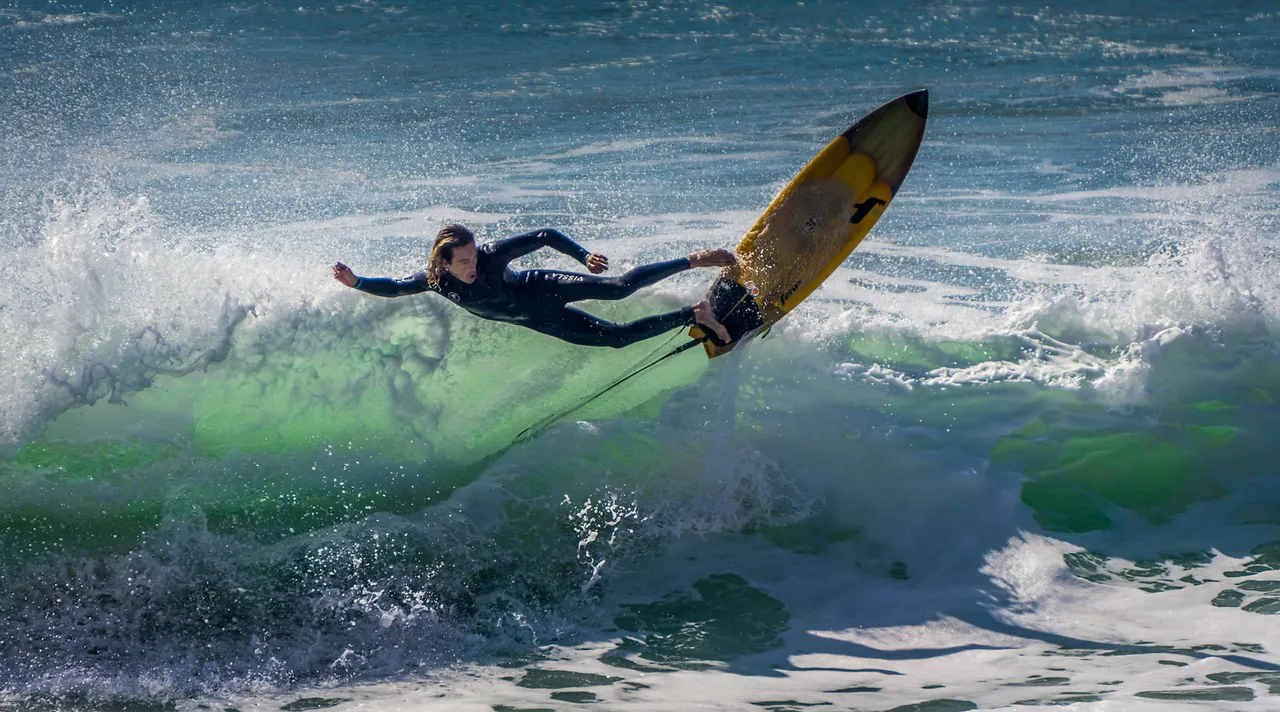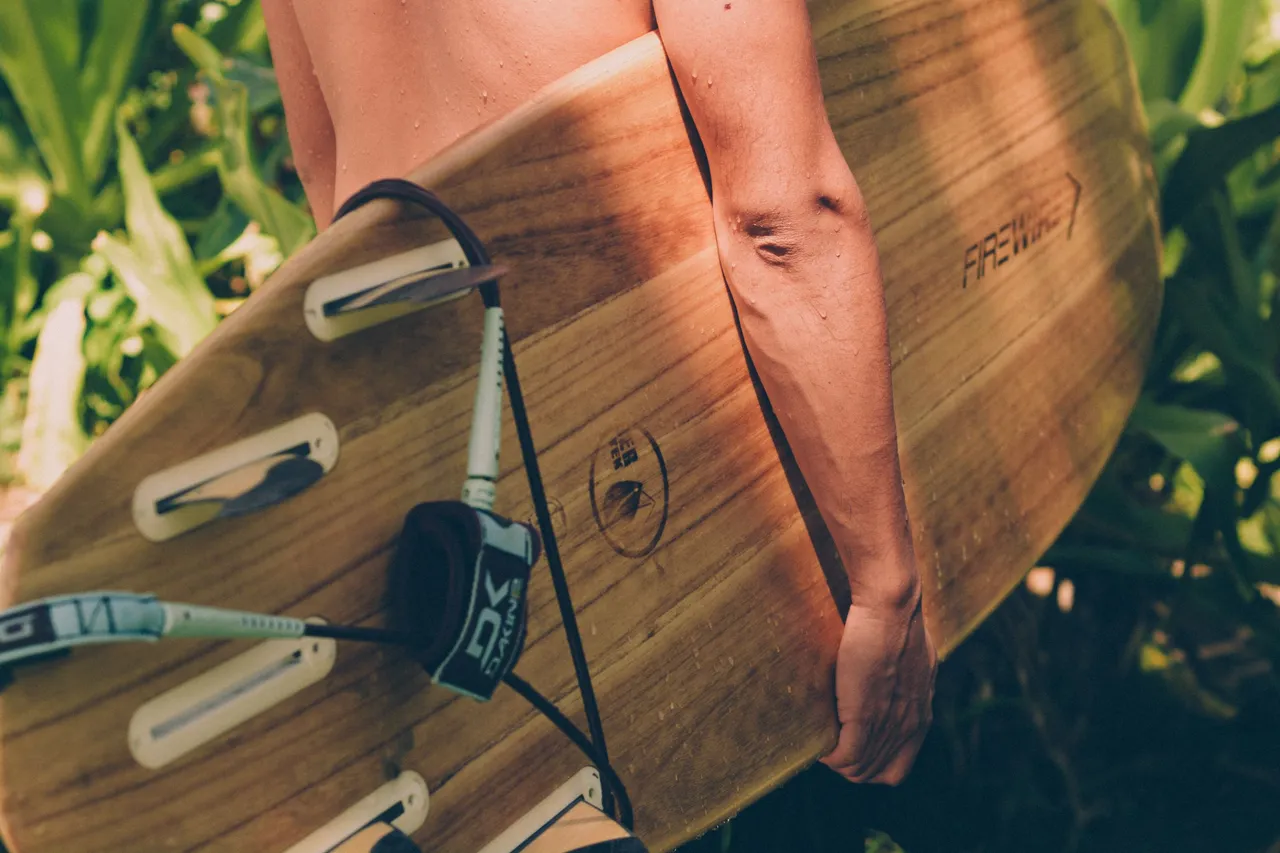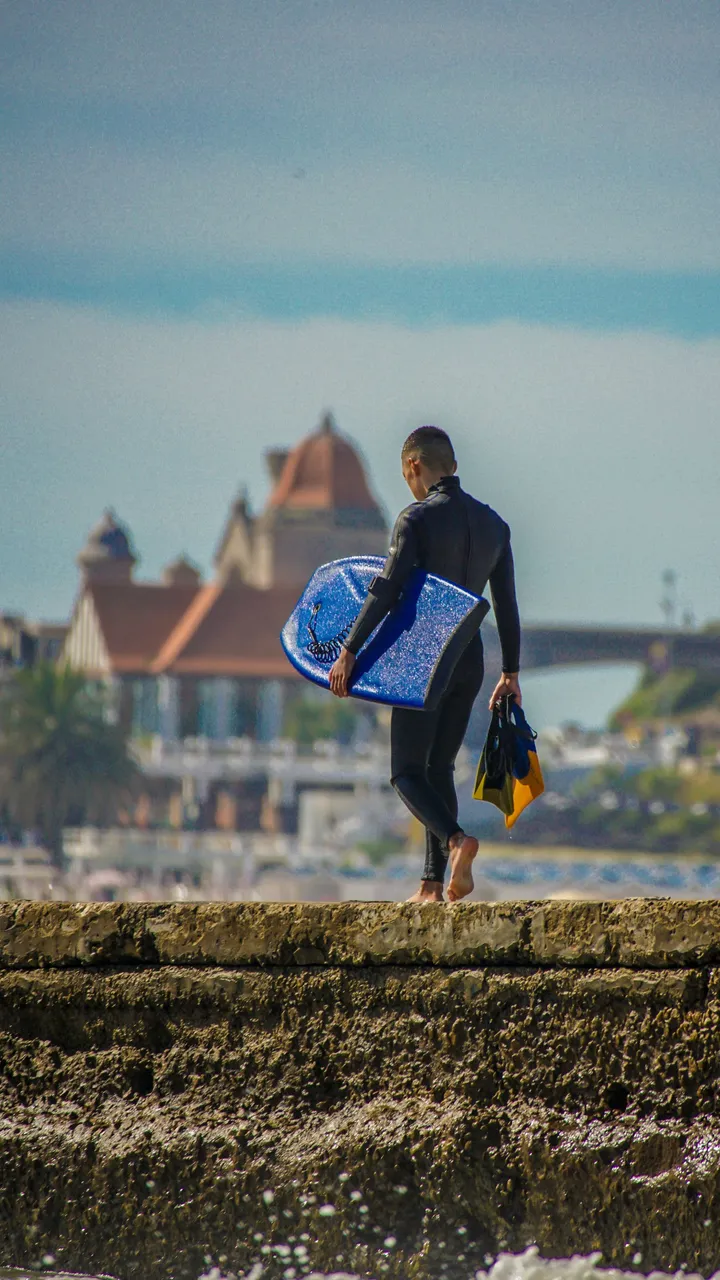English [🇺🇸]
Choosing the right leash doesn't have to be a difficult task. That's why I created this quick guide to help you out. If you're already up to speed, then you know that a surf leash is that cord that attaches the surfboard to the surfer and is more than essential - it helps keep your board close when you're in the water.

Photo by Ray Bilcliff (Pexels)
It's normal to know all the theories and still be uncertain about which leash to buy, what size or thickness is right for you, your board, and even the type of waves you'll be catching. But don't worry because I'll help you understand it all in this post! Check it out:
🏄♀Size/Length
Generally, the leash should be at least the same length as your surfboard and preferably never shorter than it. In other words, if you have a 6'0" or smaller surfboard, choose a leash that is 5 to 6 feet long; if you have a 7'2" or 7'4" surfboard, go for a 7-foot leash, and so on.
🏄♀Thickness
The thickness of the leash you'll use depends on your experience in the water and the size of the waves you'll be riding. If you're a beginner surfer, opt for a thicker leash (6mm or more), as they are more resistant and will endure wipeouts longer.
If you already have experience and/or compete, using a thinner leash (4 to 5mm) is recommended, which will have less resistance and drag in the water, thus enhancing your performance.
Another factor to consider is the volume (liters) of your surfboard. Choose thicker leashes for larger boards (funboard, longboard, and stand-up paddle boards) and more voluminous boards (even if the board itself is small) to compensate for the pull force generated by these boards.
🏄♀Types
Leashes made for regular surfboards, longboards, and stand-up paddle boards are straight and always used around the ankle, following this general rule: larger and thicker leashes for bigger and more voluminous boards, and smaller and thinner leashes for smaller and less voluminous boards.

Photo by Ging Ang (Pexels)
Leashes used for bodyboards are usually coiled (similar to old telephone cords) and used around the arm (biceps).
🏄♀Swivel
As the name suggests, the swivel is meant to prevent the leash from getting tangled around your foot or leg. It's good to have at least one swivel on your leash (either on the ankle cuff or on the surfboard tail), as this prevents the leash from tangling, reducing the risk of accidents and increasing the product's lifespan.
There are two types of swivels:
- Injected, where the swivel is encapsulated in rubber and fused to the leash, surfboard tail, or ankle cuff, and it's easier to untangle;
- Knot, where the leash itself is tied to the swivel through a knot and stitched to the surfboard tail and ankle cuff.
The injected type generally provides easier untangling but comes at a higher cost than the knot-type swivel.
🏄♀How to Use
The leash should always be attached to your back foot. So, if you are goofy, your leash should be attached to your left ankle; if you are regular, the leash should be attached to your right ankle.

Photo by Gaby Lopez (Pexels)
The same applies to bodyboarders, except the leash is attached to the bicep instead of the ankle. Some longboarders prefer to attach their leash to the calf, just below the knee, to prevent it from getting tangled when walking forward or backward on the board.
🏄♀Nomenclature: Comp x Regular
Many brands use this vocabulary to differentiate leashes commonly used for competitions ("comp," up to 5mm thick) from regular ones ("regular," starting from 6mm thick). But remember, this is not a strict rule; it's just a reference.
There you have it! Did you clear up your doubts? I hope so! There are several details, but I'm sure you'll handle it just fine.
Mahalo!
About me
Biologist, Photographer, Content Producer, and Community Builder. Please take a look at my introduction post to get to know me better.
My social networks:
- Personal Instagram – me, my husband, my cats, sustainability, biology curiosities, and adventures: @crisciacm
- Professional Instagram – surf, nature, and people photos: @crisciacesconettophoto
- Youtube Channel - surf videos: @crisciacesconetto
- My profile at Thatsgnar.ly - crisciacesconetto
- Twitter – Não sei o que fazer por lá, mas existe: @crisciacm
Português - BR [🇧🇷]
Escolher o strep não precisa ser uma tarefa difícil. Por isso criamos esse guia rápido para te ajudar. Se já está por dentro, então você já sabe que o strep é aquela cordinha que prende a prancha ao surfista e que é um acessório mais do que essencial, e que vai ajudar a manter a prancha por perto quando você estiver dentro do mar.

Foto de Ray Bilcliff (Pexels)
Agora, é super normal saber toda a teoria e na prática ficar na dúvida de qual comprar, qual tamanho ou espessura é a certa pra você, pra sua prancha e até pro tipo de mar você vai pegar. Mas não se preocupe porque nesse post eu vou te ajudar a entender tudo isso! Se liga:
🏄♀Tamanho/comprimento
Como regra geral o strep tem que ser pelo menos do mesmo tamanho que sua prancha e, de preferência, nunca menor que ela. Ou seja, se você tem uma prancha 6'0" ou menor, escolha um leash de de 5 a 6 pés; se você tem uma prancha 7'2" ou 7'4", escolha um leash de 7 pés e assim por diante.
🏄♀Espessura
A espessura do leash que você vai usar vai depender da sua experiência no mar e também do tamanho dele. De modo geral, se você é surfista iniciante, prefira um leash com maior espessura (6mm ou mais), pois eles são mais resistentes e vão aguentar os caldos por mais tempo.
Se você já tem experiência e/ou compete, é recomendável que use um leash de menor espessura (4 a 5mm), que terá menor resistência e arrasto na água, aumentando sua performance.
Um outro fator a se levar em consideração é a litragem (volume) da prancha. Prefira leashes mais grossos para pranchas maiores (funboard, longboard e stand up) e mais volumosas (mesmo que a prancha seja pequena) para compensar a força do repuxo que essa prancha vai ter.
🏄♀Tipos
Os leashes feitos para pranchas de surf, longboard e standup são retos e sempre usados no tornozelo, e acompanham aquela lógica geral: streps maiores e mais grossos para pranchas maiores e mais volumosas e streps menores e mais finos para pranchinhas menores e menos volumosas.

Foto de Ging Ang (Pexels)
Já os leashes usado para bodyboard são geralmente em espiral (tipo fio de telefone antigo, sabe?) e usados no braço (no bíceps).
🏄♀Destorcedor
O destorcedor, como o próprio nome diz, tem a função de evitar que o fio fique enrolando no seu pé ou na sua perna. O bom é que o seu leash tenha pelo menos um destorcedor (ou na pezeira ou no protetor de rabeta), pois isso evita do fio se emaranhar, evitando o risco de acidente e aumenta a vida útil do produto.
Existem dois tipos de destorcedor:
- Injetado, em que o destorcedor fica encapsulado na borracha e fundido ao fio, protetor de rabeta e pezeira e tem maior facilidade na distorção;
- Nó, em que o próprio fio fica preso ao destorcedor através de um nó e costurado na pezeira e no protetor de rabeta.
No geral, o tipo injetado proporciona o desenrolar mais fácil, porem tem um custo superior ao destorcedor tipo nó.
🏄♀Como usar
O strep deve estar sempre preso no seu pé de trás. Então se sua base é goofy, seu strep deve ser preso no seu tornozelo esquerdo; e se você é regular, o strep deve ser preso no seu tornozelo direito.

Foto de Gaby Lopez (Pexels)
A mesma lógica vale para o bodyboard, só que ao invés de ser preso no tornozelo ele é preso no bíceps. Aa, e alguns surfistas que usam o longboard preferem prendê-lo na panturrilha, logo abaixo do joelho, evitando que ele enrosque no seu pé durante o surf, quando você caminha pra frente ou pra trás sobre a prancha.
🏄♀Nomenclatura: Comp x Regular
Muitas marcas usam essa nomenclatura para diferenciar os leashes comumente usados para competição ("comp" de até 5mm) dos regulares ("regular", a partir de 6mm de espessura). Mas lembre-se que isso não é uma regra, é apenas uma referência.
E aí, deu pra sanar as dúvidas? Espero que sim! São vários detalhes, mas aposto que você vai tirar de letra.
Mahalo!
Sobre mim
Bióloga, Fotógrafa, Produtora de Conteúdo e Construtora de Comunidades. Dá uma olhada no meu post de introdução pra me conhecer melhor.
Minhas redes sociais:
- Instagram pessoal – eu, meu marido, meus gatos, sustentabilidade, curiosidades biológicas e aventuras: @crisciacm
- Instagram profissional – fotos de surf, natureza, e pessoas: @crisciacesconettophoto
- Canal no Youtube - videos de surf: @crisciacesconetto
- Meu perfil no Thatsgnar.ly - crisciacesconetto
- Twitter – I don't know what to do there, but it exists: @crisciacm